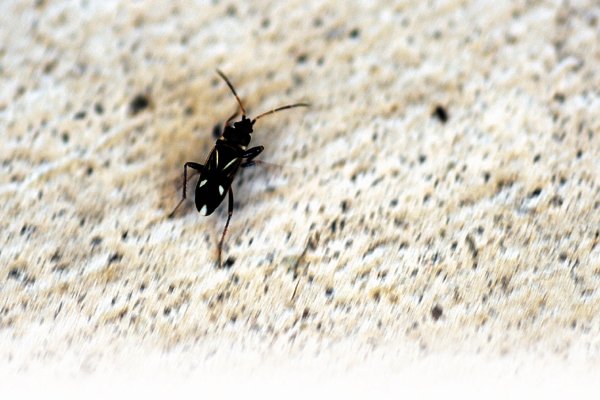After plaguing Pinnacles National Monument for decades, exotic
pigs will provide nourishment for convalescing cougars
Paicines – After more than $2 million and two decades of work, more than half of Pinnacles National Monument has been declared free of exotic pigs, which had been terrorizing native wildlife in the area since the 1920s.
“I’m delighted that this has finally happened,” monument Superintendent Eric Brunnemann said. “To have a success like this with an invasive species takes a lot of hard work.”
“Exotic pigs” is a blanket term for wild boars and feral hogs descended from pigs that escaped captivity centuries ago. They are not native to the Americas, but were introduced to the country by European settlers. The pigs, which can weigh anywhere between 150 and 300 pounds, eat native plants and even sometimes small mammals, leaving a path of destruction in their wake as they root the ground with their snouts searching for food.
“I have a lot of respect for these animals, they’re good at what they do,” said Blake McCann, wildlife biologist from the Institute for Wildlife Studies, who partnered with Pinnacles to remove the pigs. “I just think they should do it in Europe and Asia, where they belong.”
The pigs were identified as a problem at Pinnacles in the 1980s and more than $2 million has been spent on fencing, research and manpower to keep the beasts out of the park. To that end, a 30-mile fence was constructed around 14,500 acres of the 26,000-acre monument. The fence needs to be constantly maintained and patrolled to ensure that no pigs sneak back into the park, a duty parks staff will have to keep up with for years to come.
“Over three-quarters of our official ‘wilderness’ is in that area,” Brunnemann said. “It would be a goal to fence off the entire area, but money becomes an issue.”
Once the fence was erected, staff could begin removing the pigs in earnest. Nearly 200 were trapped or hunted over the course of the project, some with the help of the “Judas pig”– one of ten females captured and fit with a radio collar, so that it will lead staff to other pigs on the land.
“It sort of turns its buddies in, that’s how it got the name Judas pig,” McCann said.
Such efforts can often incur the wrath of protesters, even when park staff are acting in the best interest of native plants and animals, and the local ecosystem at large. To date though, officials are not aware of any protests.
“I attribute that to the fact that we’ve been very good about compliance,” Brunnemann said. “People know that what we’re doing is very humane, and that we’re not trying to eliminate an entire species or change their way of life. We’re just trying to protect the native wildlife.”
Once the pigs were destroyed, their carcasses were shipped to a mountain lion recovery project in southern California to help feed the big cats.
“Even though all the pigs were destroyed, we wanted to make sure there was a good use for them, that was part of the deal,” McCann said.
Already the land is starting to show signs of recovery, park officials say.
“When you look on the other side of the fence and see what these pigs are doing, they’re like miniature bulldozers,” Brunnemann said. ” But when people come to visit us, they want to see California as it was originally with beautiful landscapes.”











